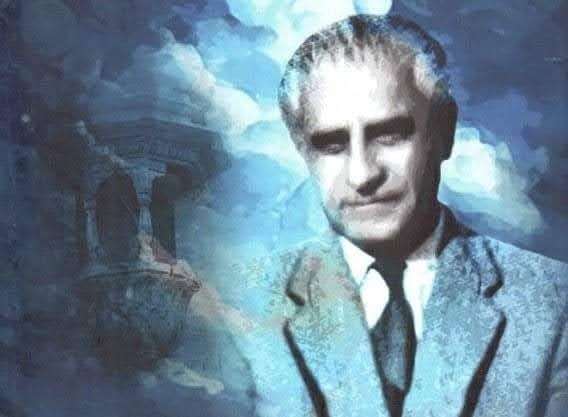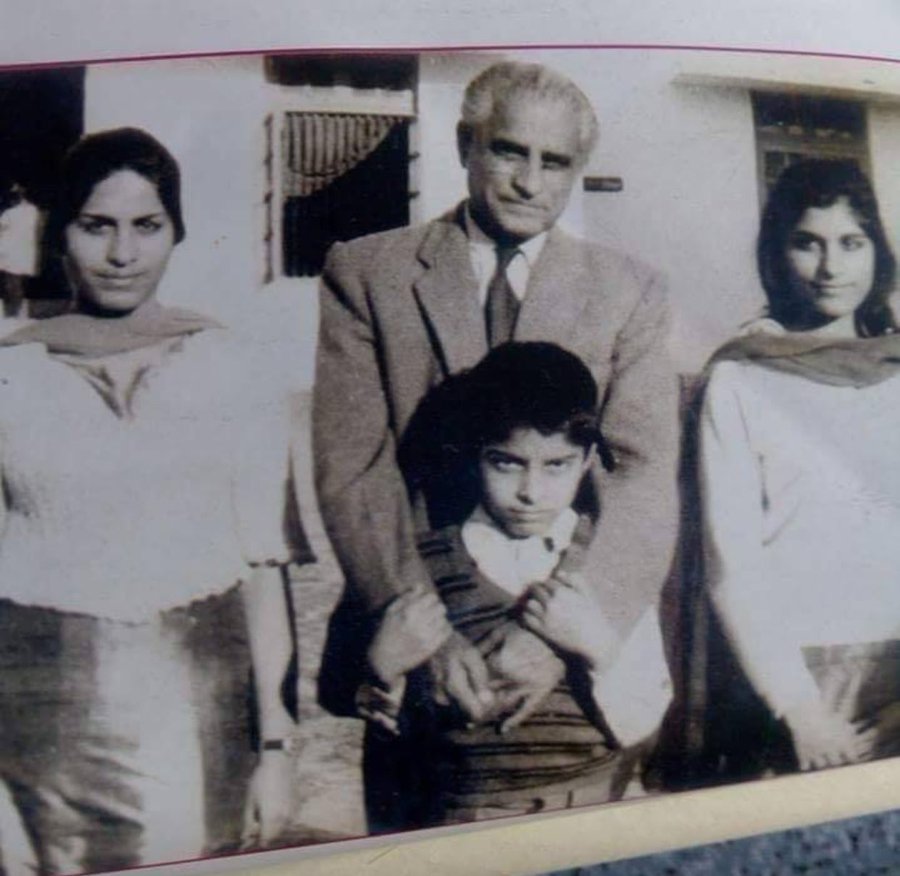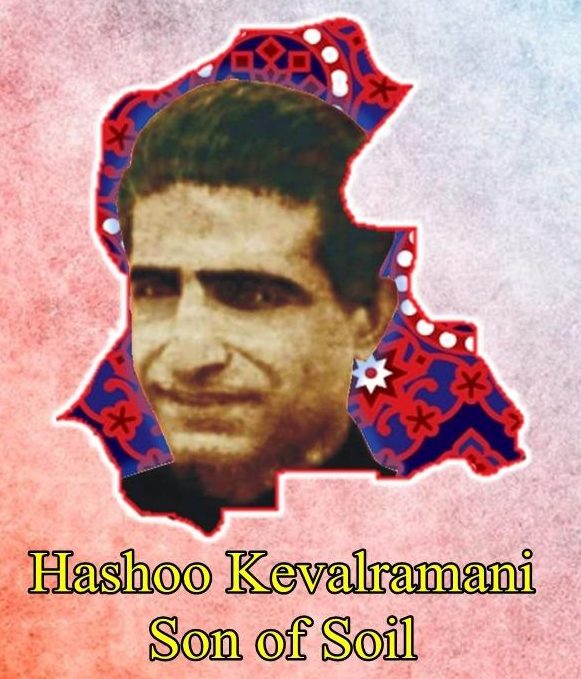
After Hashu’s arrest in Karachi, Additional Commissioner Masood, a biased officer, had asked him, “Why don’t you leave for India?” and Hashu’s reply was ‘Why should I. This is my motherland.’
By Nasir Aijaz
Decades back when I was first introduced to Saeen G. M. Syed, the great nationalist leader of Sindh, at Hyder Manzil, his residence in Karachi, the first question he put was about my hometown. When I just uttered the word ‘Bhiria’, he said, “Hashu Kewalramani’s hometown?”
“I had been there to meet Hashu,” he told, and asked whether Hashu’s home was still intact.
The glimpses of happiness, which I had noticed on his face while hearing the word Bhiria and talking about Hashu, his friend and political guru, had suddenly disappeared when I told him that Hashu’s home exists no more. “I still remember the marble plaque affixed at the door side of Hashu’s home located in a street leading to the bazaar, but it was during my childhood days.”
The occupants of that historic residential building, being unaware of its importance, had demolished it and rebuilt a new home, erasing the history. Hashu Kewalramani was friend of my ancestors and used to share literature even after the partition. I had found a booklet with his signature, he had sent to my grandfather from London.
Hash Kewalramani, a legend of Sindh, was born on December 20, 1914 to Tahalram, a Zamindar and Mukhtiarkar in Revenue Department in that home in Bhiria, a tiny town of Naushehro Feroze district (formerly part of Nawabshah district). Hashu’s grandfather’s name was Khhenyomal. Tahalram, who also served as Resident Magistrate, had two sons – Hashmat Rai alias Hashu and Gopichand alias Gope. Hashu was about eight years when his father passed away on December 23, 1922.

Traditionally, the legendary persons are remembered on their birth and death anniversaries, but today, the 13th of December, I am writing this piece to remember Hashu Kewalramani, as this is the unfortunate day when after his release from the detention in Karachi, Hashu was forced to leave his motherland Sindh for India on December 13, 1949. It was the December when he opened the eyes in this world in Sindh, his father passed away also in the December and in the same month the government of newly created country – Pakistan, had expelled him from his motherland Sindh.
According to Bombay Chronicle’s archival record of December 13, 1949, Hashu Kewalramani, who had been detained under the Public Safety Act by the Pakistan Government, had been released and expelled. “He is said to have left for India”, the Bombay Chronicle reported with slug ‘Red Extern from Pakistan’.
Hashu Kewalramani was arrested by the Pakistan government from his apartment in Karachi on the charges that ‘He was writing something whole the night’. Yes, he was translating Saeen G. M. Syed’s book ‘Naeen Sindh Lae Jidojehad’ (Struggle for a New Sindh). Shaikh Ayaz, great poet of Sindh, in his book ‘Sahiwal Jail Ji Diary’ (A Diary of Sahiwal Jail) writes that he accompanied Hashu when he was produced before Additional Commissioner Masood (An ICS Officer) in Karachi. Masood asked Hashu, “Why don’t you go to India?”, and Hashu’s reply was, “Why should I go. This is my motherland.” And then, the officer ordered Hashu’s detention saying, “You Sindhis will be decimated like Red Indians.” Masood, later known as Masood Khadarposh, was the same Deputy Commissioner, involved in massacre of Sindhi Sikhs in Nawabshah.
On the occasion of Hashu’s ‘Red Extern’ from Sindh, I would like to share an important chapter of history that encompasses his anti-imperialism struggle and efforts to mobilize the students’ power against the British Raj.
Hashmat Rai, who loved to be called Hashu, had his primary education in Bhiria’s Kauromal Chandanmal Academy School and did his matriculation from historic N. J. V. High School Karachi, from where he proceeded to Sri Lanka at the age of 17 and passed an examination for studies in London. He was sent to London in 1935 as his mother and other relatives wanted him to appear in Indian Civil Service examination and become a bureaucrat but Hashu was of different nature. Instead of appearing in ICS examination, he got him enrolled in aeronautical engineering and later switched over to economics and again to politics, as his restless soul didn’t allow him to sit at one place. It was the time when he met Indra Gandhi, her husband Feroze Gandhi and also developed close relations with Indra’s father Jawahar Lal Nahru. Hashu during his stay in the UK became a close associate in India League of Krishna Menon, a Leftist, who later became a right-hand man of Pandit Jawaharlal Nehru.
Hashu actively participated in political gatherings of freedom fighters in London. He returned to Karachi when the World War II started in 1939, and then couldn’t go back to London. Here a new chapter of his life had begun, as he got involved in students’ movement.
Although the students’ movements in Sindh had started since first decade of 20th century, but Hashu is known as the man who united the students under the banner of All India Students’ Federation (AISF), and thus the historians remember him as the Pioneer of Sindh Students’ Federation, a chapter of AISF.
Ajeet Jawed, Professor, Department of Political Science, Satyawati College, New Delhi, in her article on Comrade Sobho Gianchandani, another legend of Sindh, writes that ‘the pioneering role in uniting the students of Sindh was played by Hashu Kewalramani, a journalist trained at the United Kingdom (UK)’.
“He organized the students and brought them under the banner of the All India Students Federation with himself as the President and Kishin Motwani and Abhichandani as its General Secretaries”, Ajeet writes.

Very soon the organization became a powerful movement and spread to all the towns of Sindh. At Karachi an office was set up to solve the problems of the students and to discuss the political issues. Pritam Tahiliani, Santosh Kumar Dharmani, Rocho Pardasani, Sarla Ahuja, Moti Motwani, Radhakrishnan Wadhwani, Sukhram Virwani, Rijhu Abichandani, Rochi Pardasani, and Hashu’s own younger brother (Gopi alias Gope) were active members of the AISF. Some of them worked as whole-timers. Besides the AISF, the Student’s Congress, which was a part of the All India Congress, was also active under the leadership of Tulsi Tahiliani. But the AISF was more powerful, more representative, and had more members and following. Its branches were set up in different parts of Sindh.
At Sukkur, in 1940, a conference of the Sindh students was organized. C.T Valecha, a prominent leader of the Congress and member of the Legislative Assembly, Sindh, wanted Indira Gandhi, daughter of Pandit Jawaharlal Nehru, to preside. However, all the students with Leftist views wanted Muqimuddin Farooqi, a student of Delhi University, and at that time the General Secretary of the AISF, to preside. They succeeded and Farooqi presided over the Sukkur Students’ Conference.
Despite differences, all the students belonging to different student organizations unitedly opposed the dragging of India into the Second World War and organized demonstrations against the government. The most impressive event in the annals of this organization, according to Baldev T. Gajra, a Congress leader in Sindh, was the holding of an anti-imperialist demonstration on September 1, 1940 in Karachi. Thousands of students joined the demonstration and shouted anti-British and anti-war slogans. The authorities, alarmed at the rise and militancy of the student movement, came down heavily upon the organizers. They arrested a large number of students including Hashu Kewalramani, President of the AISF, Pritam Tahilramani and Santosh Kumar Dharmani. Hashu Kewalramani was prosecuted and sentenced to 18 months rigorous imprisonment.
However, the authorities failed to suppress the revolutionary spirit of the students. Immediately after the arrest and imprisonment of Hashu Kewalramani, Sobho Gianchandani took over the leadership of the student community of Sindh. In 1941 the AISF organized and led a strike against the enhancement of fee in all the colleges of Karachi. Narayan M. Wadhwani, Parcho Vidyarthi, and Sital Daryanani were also in the forefront and organized the students in Metharam and Sewa Kunj hostels and brought them in the agitation. The Union succeeded in getting the fee reduced and got the instalment system introduced.
Under Sobho’s stewardship the AISF became highly popular. To make the students aware of socialism and the achievements of the Russian Revolution, study classes were organized. Sobho used to deliver lectures and was respected by the entire student community.
Another historian Dayo Nathani, in his book ‘Karachi students on the march’, published in 1946, states that Hashu used to publish and distribute posters against British imperialism. One of such posters had a photo of long military shoe with the caption ‘Stop this march of imperialism’. Dayo Nathani writes that Hashoo was arrested along with other students and was first imprisoned for 18 months in 1940-41 and again for two months in 1942. “However, he again became active to organize the students soon as was released from jail, and left for a tour of entire Sindh along with Sobho Gianchandani”.
I will conclude my piece here, as it requires several books to write on life, struggle and works of Hashu Kewalramani, whose death in 1986 is still a mystery.
_____________________
The author is a senior journalist and Chief Editor, Sindh Courier, based in Karachi.